The Theatre Royal from the Theatre Collections in Belfast Central Library
Among the many boxes and folders of theatre archives within the library are a set of bill posters from the Theatre Royal. They date from 1867 to 1871 and were collected by Alexander Riddell. They have been used for our online exhibition and provide a fascinating insight into Belfast social interests and habits of the time.
Alexander Riddell was a Belfast man who worked as a journalist for the Northern Whig and became its theatre critic. Born in 1873, Riddell took a keen interest in every aspect of Ulster history and had a particular interest in Belfast social history. He was an encyclopaedist, gathering and transcribing information that was helpful for his articles and for his own interest. His collection, donated to Belfast Central Library includes scrapbooks of his own articles from the Northern Whig, information on stage-coaching in Ulster, biographies of prominent citizens, press cuttings, and letters from readers around the world. He retired from the Northern Whig in 1952 and died in April 1958.
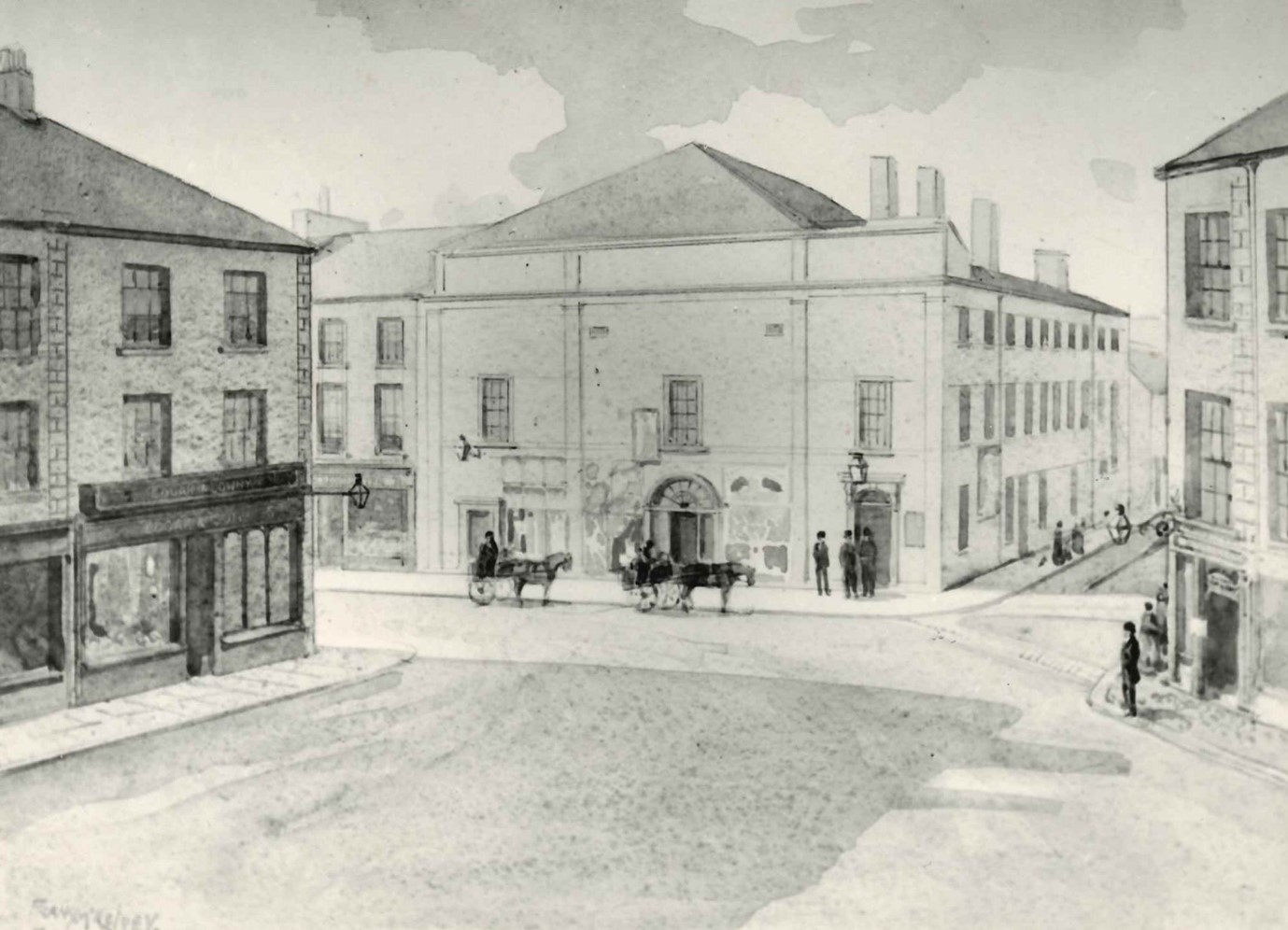
The Belfast Theatre was situated on the corner of Arthur Street and Castle Lane. Construction of the theatre was overseen by Michael Atkins who was a veteran theatrical manager; it opened on 25 March 1793 and was Belfast’s largest auditorium seating up to 1,110 people.
Management of the theatre changed several times over the years and included Mr Montague Talbot who introduced a variety of drama, comedy and music hall performances. Originally known simply as ‘Theatre - Arthur Street’, it was renamed the Theatre Royal after Queen Victoria’s visit to Belfast on 11 August 1849.
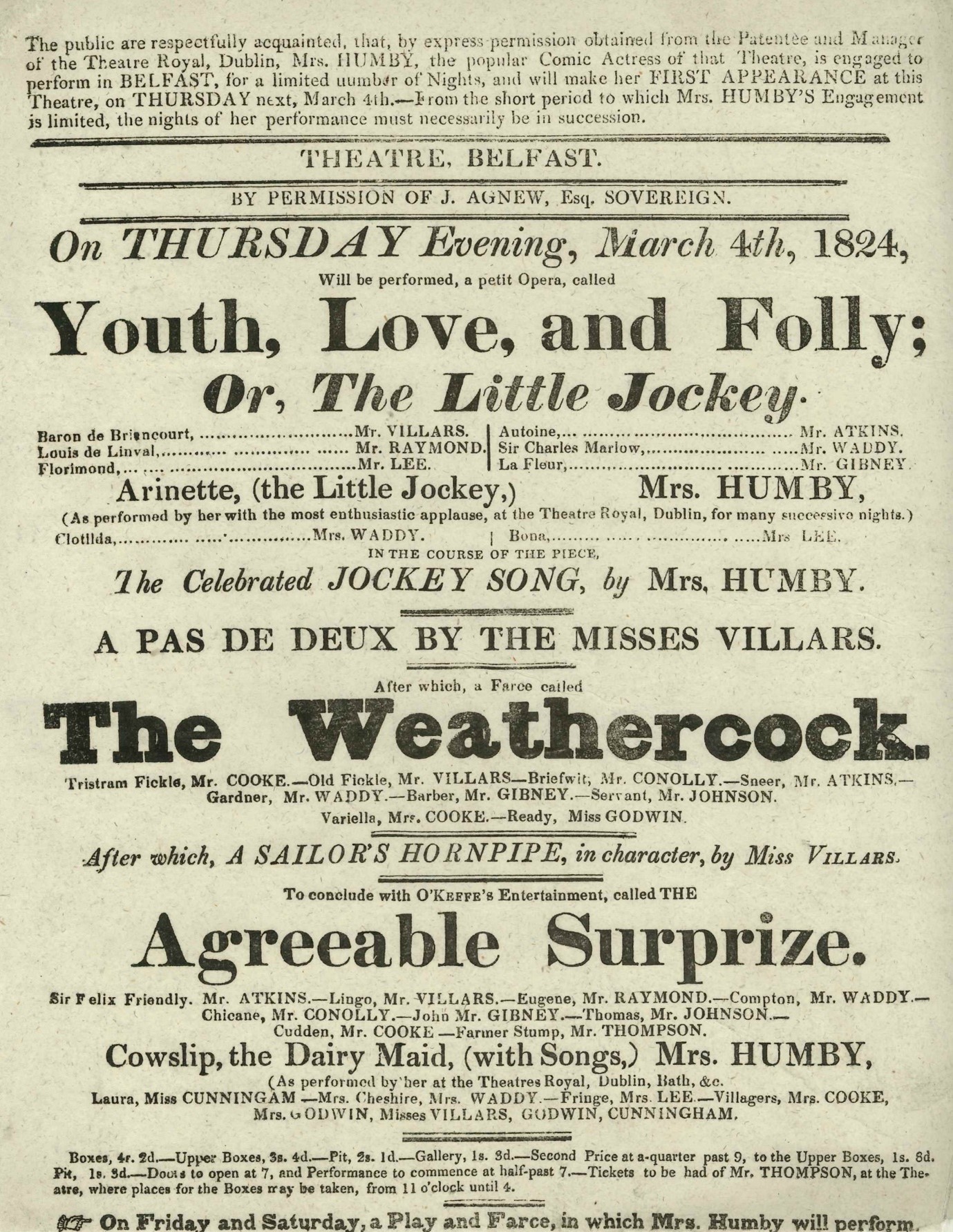
This bill from March 1824 is one of the rare earlier examples in the Riddell collection. It was referred to by Alexander Riddell in a series of weekly articles he wrote in 1924, commenting on Belfast theatre life one hundred years earlier, now two hundred years ago. In the third article in the series about Mrs Humby’s performances, Riddell notes that references to her beyond these bills are scarce, reflecting that “she may, as did so many on the stage, have died unchronicled, a fleeting memory to her friends, then a name, and then oblivion.”
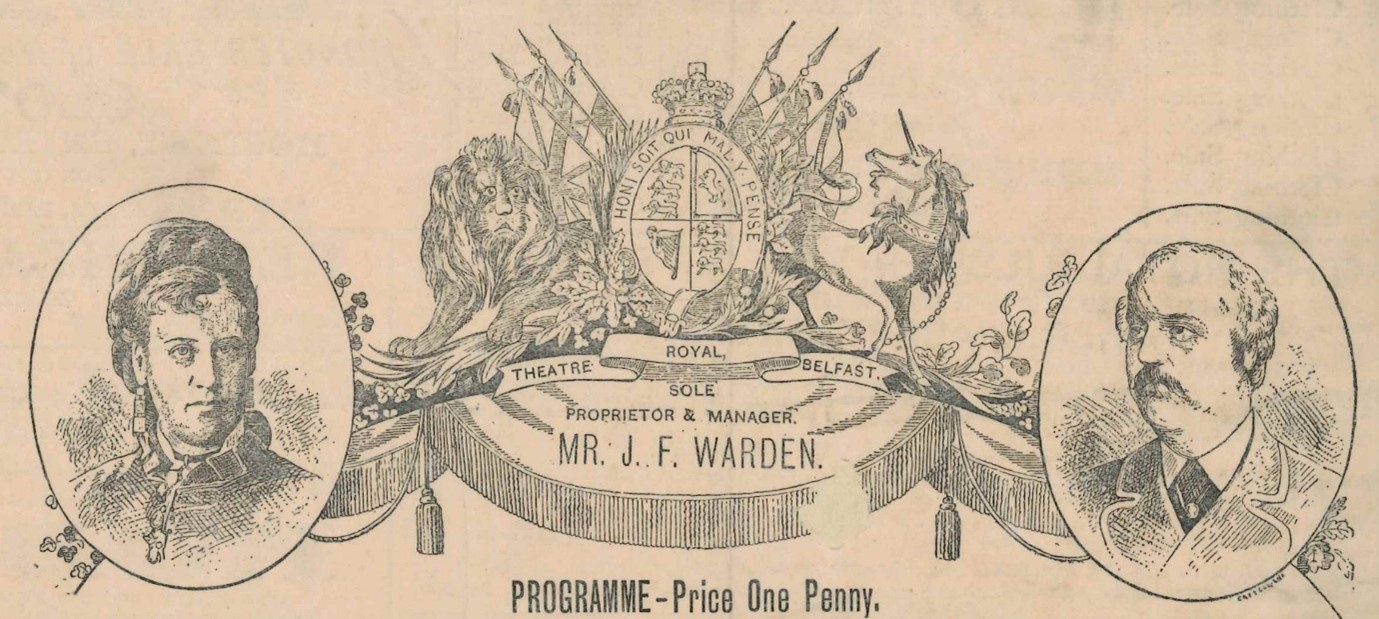
The theatre saw a succession of owners throughout the nineteenth century until it passed into the hands of Joseph Frederick Warden. Already a successful English actor, Warden started acting at the age of eighteen, appearing in shows in Scarborough. Whilst touring in Edinburgh he met Jenny Bellairs who sang with a troupe called the Singing Chambermaids. They married and performed together before settling in Belfast.
Warden began managing the Theatre Royal from 1863 and he brought in many big names to perform in Belfast. He continued to act himself, frequently opposite his wife. Warden is notable for seeing the theatre through major renovations and rebuilding it after a fire in 1881.
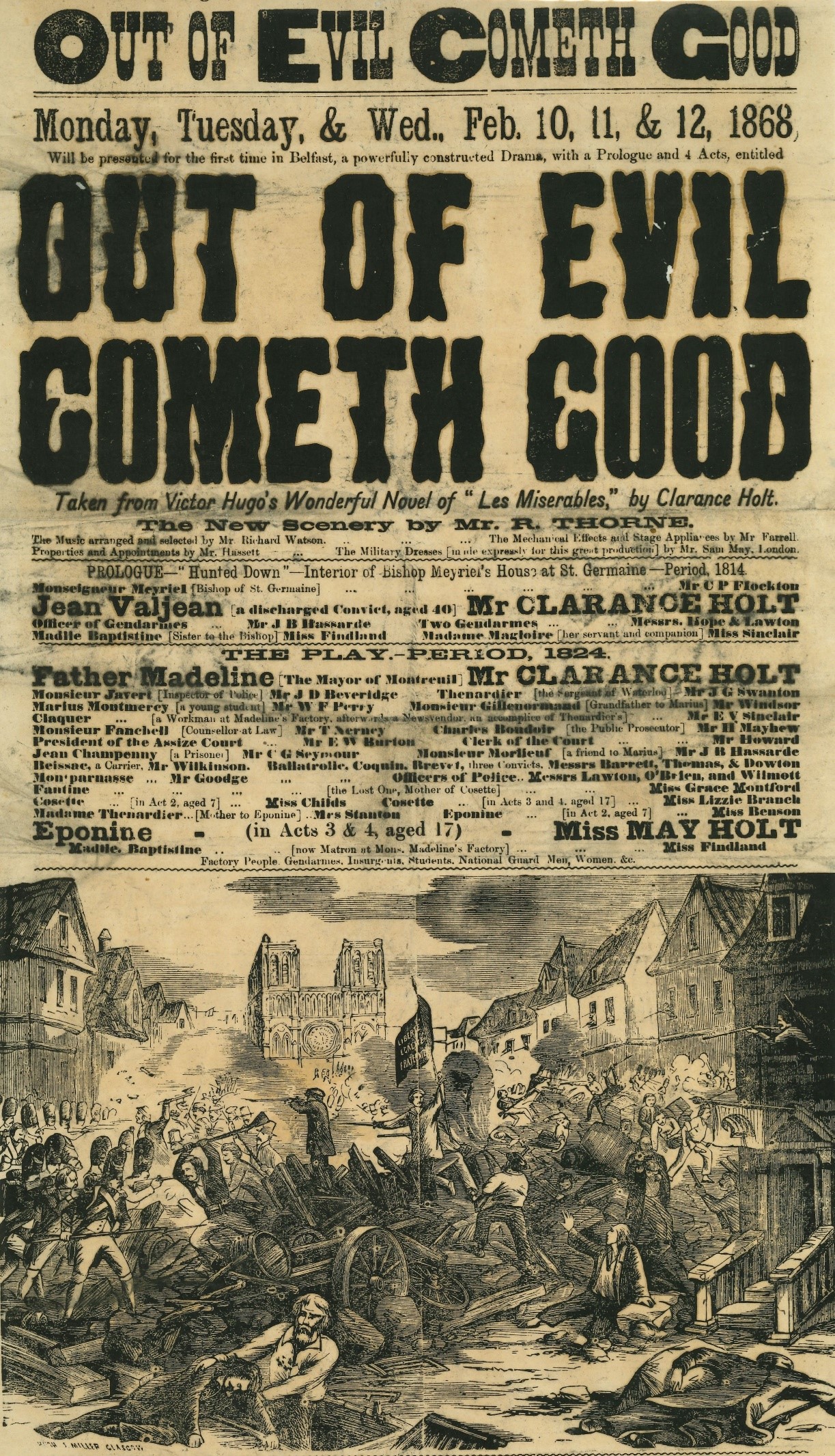
There was a great demand for theatrical adaptations of wildly popular works of literature by authors such as Charles Dickens, Samuel Lover and Sir Walter Scott. This bill from 1868 features an adaptation of Victor Hugo’s Les Misérables which had been published in 1862. It was adapted by Clarence Holt, who portrayed Jean Valjean opposite his daughter May, who played Eponine.
Clarence was a successful actor and manager who toured with his daughter throughout England, Australia, and New Zealand. He pioneered English drama in New Zealand establishing a theatre in Dunedin while May became an accomplished playwright in her own right.
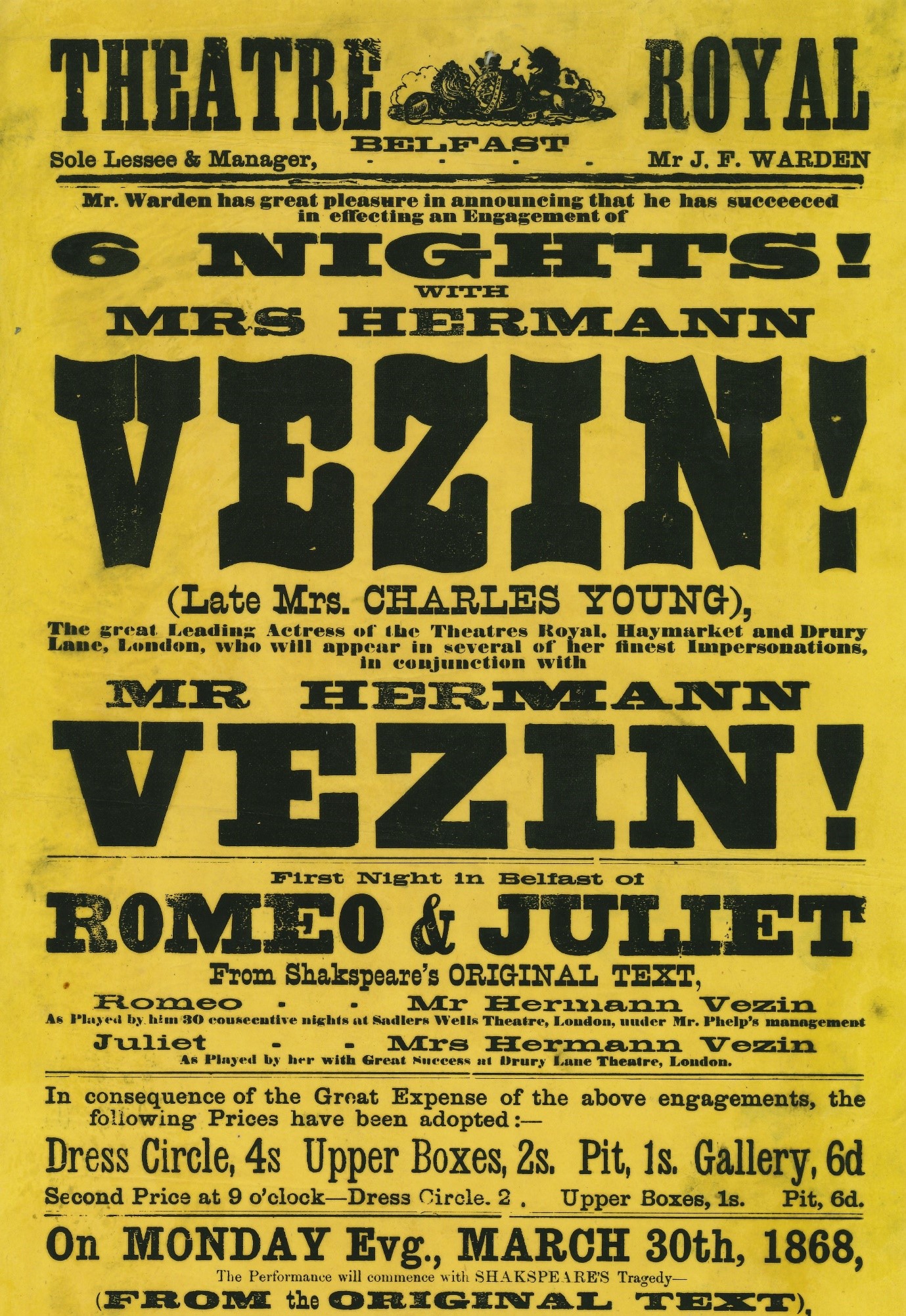
It was common to see husbands and wives, or parents and children perform on stage together, frequently in the same dramas. This bill from March 1868 features husband and wife Hermann and Jane Vezin playing opposite each other in Shakespeare’s Romeo and Juliet.
Hermann Vezin was an American actor from Pennsylvania who began his acting career in York Theatre Royal. In addition to acting he was Oscar Wilde’s elocution teacher, and wrote plays himself, including Doctor Davey. He also received critical acclaim in various London newspapers for his portrayal of Scottish poet James Harebell in The Man O’Airlie.
Jane had formerly been known professionally as Mrs Charles Young, the name of her former husband; she enjoyed an excellent reputation in Britain and Australia.
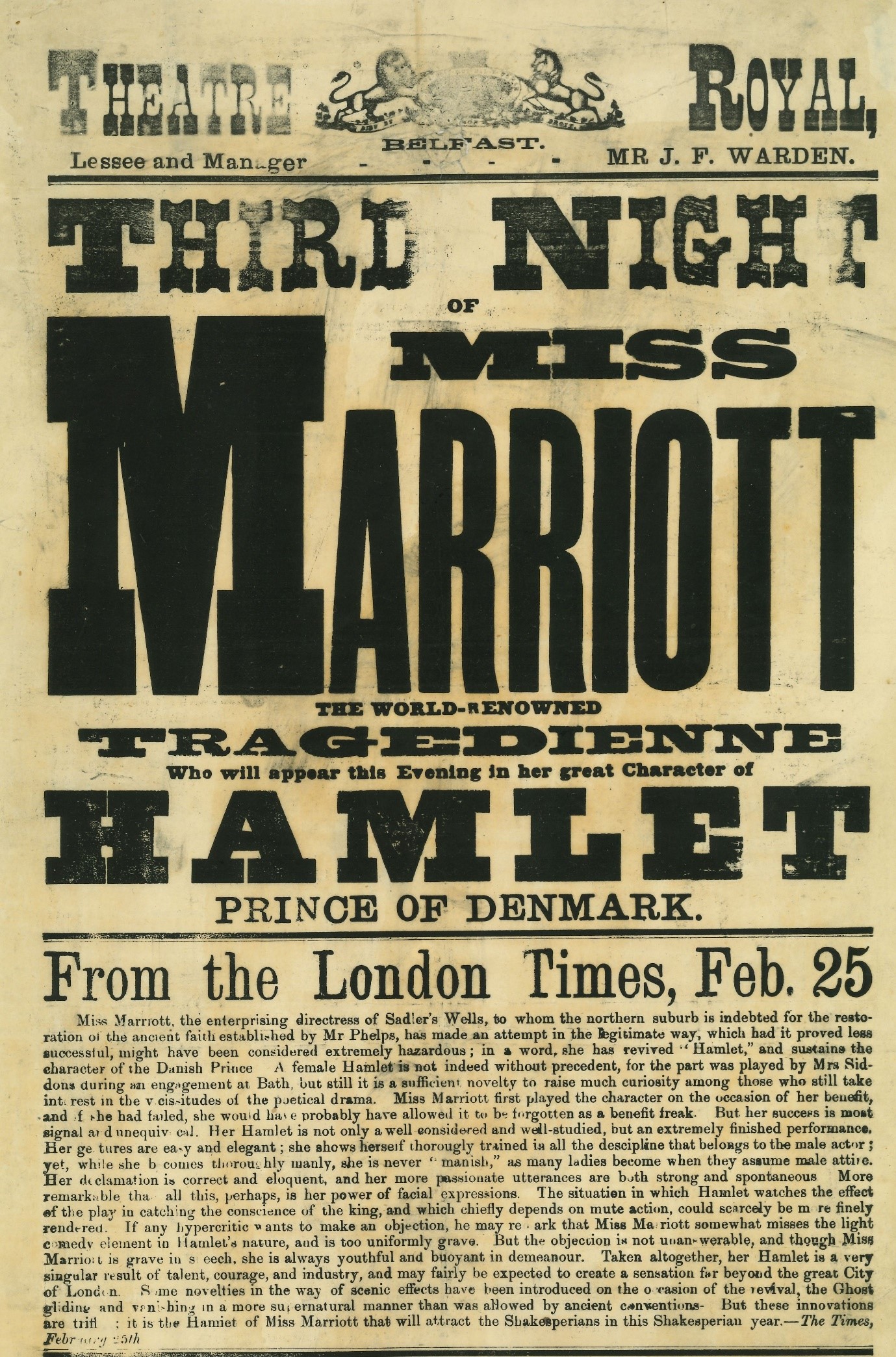
Shakespearean classics like Macbeth, Othello, Hamlet, and Richard III were popular and well attended in the Theatre Royal. Of note here is the performance of Alice Marriott, a British actress who was known professionally as ‘Miss Marriott’. Alice was an accomplished actress whose father was a theatre manager in New Zealand; she co-managed the Sadler Wells theatre in London with her husband Robert Edgar.
She was well known for portraying Hamlet, a charming reversal of the Shakespearean tradition of employing boys to play female characters. While she was not the first woman to portray male Shakespearean characters she received rave reviews. The London Times reported, “she shows herself thoroughly trained in all the discipline that belongs to the male actor; yet, when she becomes thoroughly manly, she is never ‘manish’ as many ladies become when they assume male attire.”
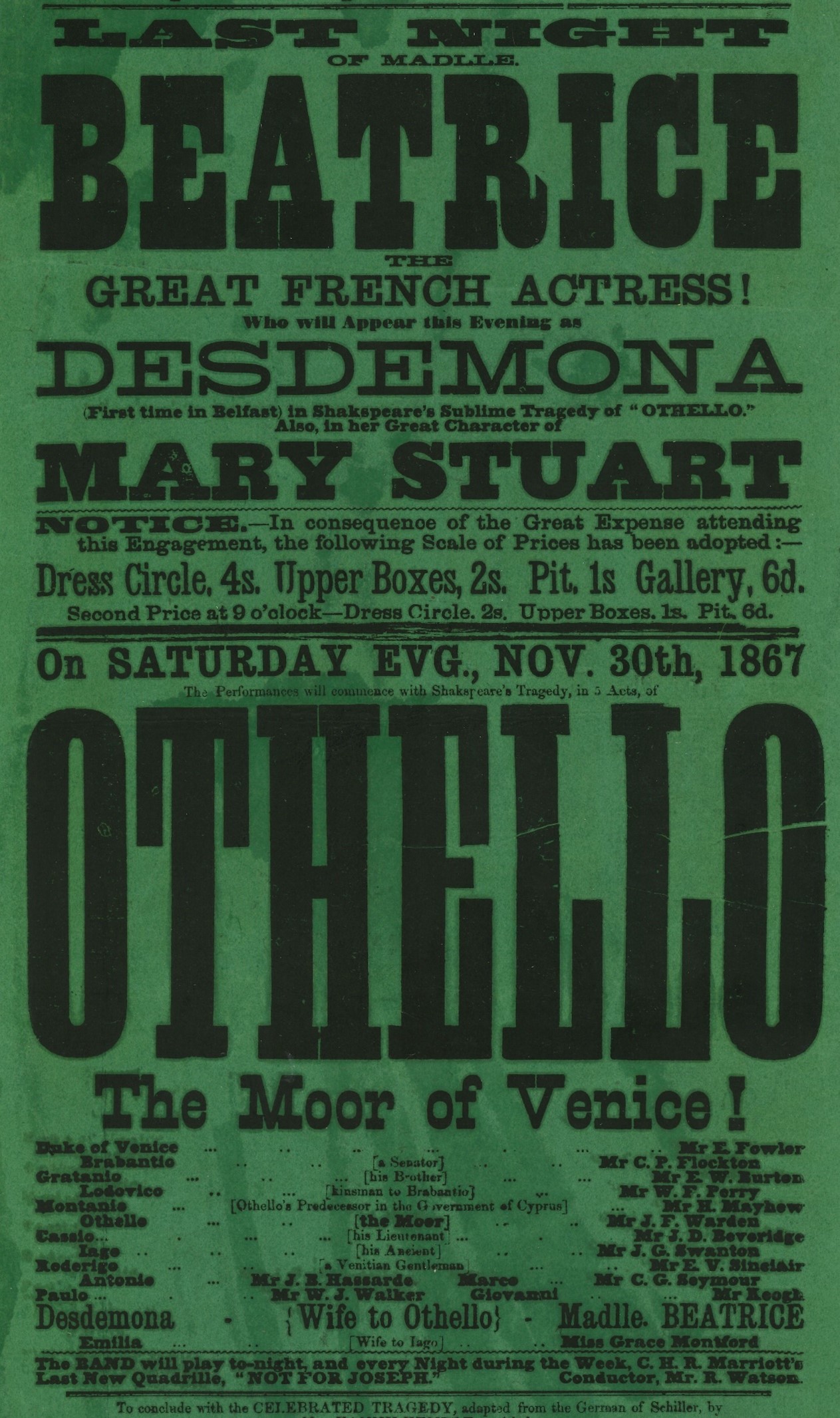
Another actress in a Shakespearian role tops the bill in 1867. Mademoiselle Beatrice plays Desdemona opposite J.F. Warden as Othello in the eponymous Shakespearian classic. Born Marie Beatrice Binda, Mademoiselle Beatrice was an Italian born actress with French aristocratic connections. She often performed English translations of French plays. She created her own ‘comedy-drama’ company and toured Britain with them, frequently visiting Belfast.
This bill marks the end of several performances Mademoiselle Beatrice gave in Belfast over the final weeks of November 1867. This saw her perform leading roles in a series of performances including Plot and Passion, The Hidden Hand, Lady of Lyons, and crowd favourite School for Scandal.
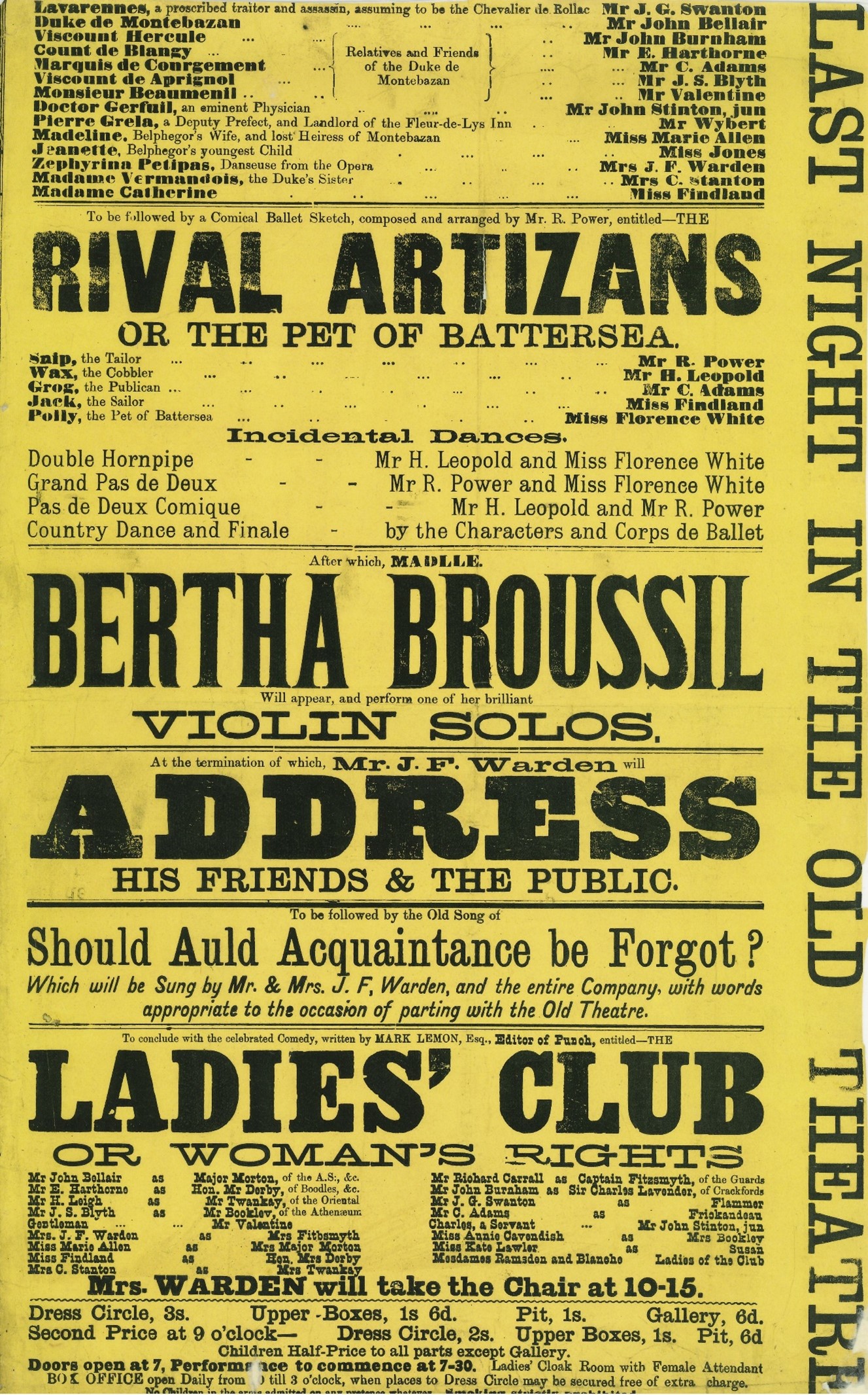
By the 1870s popular demand for the theatre outweighed the Theatre Royal’s seating capacity and Warden decided to expand. This bill features the final performances in the ‘Old Theatre’ before it was demolished in March 1871. It is missing the top half which would have shown the night’s performances including Belphegor the Mountebank or, Woman’s Constancy, a popular French historical drama. In his address Warden used the opportunity to express his “hope to make the new Theatre the scene of successes that shall dwarf the proudest efforts which these old boards have ever witnessed.”
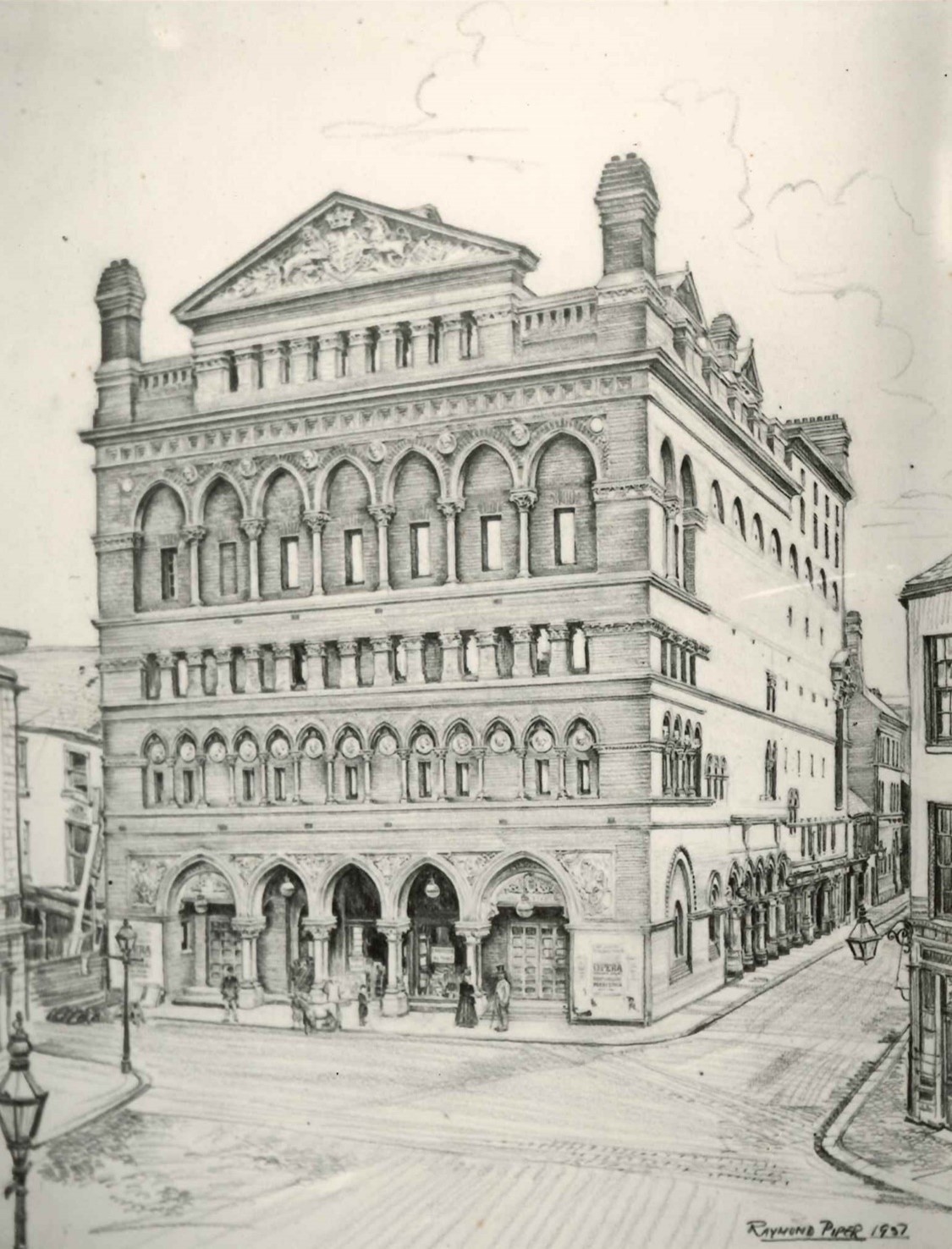
The third incarnation of the theatre opened on 25 September 1871. The new building was eighty feet high with a red brick exterior stretching along Arthur Street and down Castle Lane. It boasted new décor and a 2,200 capacity, twice the original size. Special trains ran late to accommodate later performances, indicating a renewed surge of popularity for the theatre. Unfortunately the theatre was gutted by fire in June 1881. The ever-resourceful Warden had the theatre rebuilt and opened by December of that year. Belfast favourite Barry Sullivan left his partial retirement to mark its reopening by playing the Cardinal in Richelieu.
After several more years of success the theatre struggled to compete against other theatres and cinemas, eventually closing its doors in 1915. The site has since been used variously as a cinema, shopping centre and today houses a coffee shop.
Buskers and performers are still regularly seen performing outside in Cornmarket and Victoria Square, keeping alive the spirit of Belfast’s musical and theatrical past.

